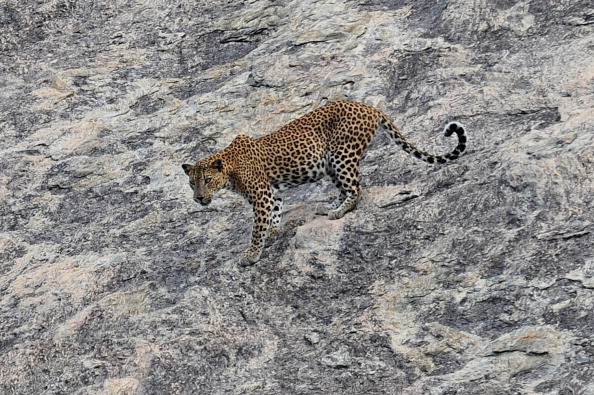Call for leopard reclassification as 'endangered' as it disappears from 94% of historical range
Scientists say Indochinese leopard numbers could be as low as 1,000 as agriculture and poaching take their toll.

The Indochinese leopard is suffering from a massive population decline, fuelled by illegal poaching and destruction to its habitat. The species is now thought to have disappeared from 94% of its historical range.
Indochinese leopards are a subspecies of leopards native to south-east Asia as well as China. Like other types of leopard, it is classified as "vulnerable" on the International Union for the Conservation of Nature (IUCN) red list of threatened species.
Traditionally, leopards have been considered less threatened than other large felines, such as tigers.
However, a new study published in Biological Conservation points out that their situation in south-east Asia is dire and could justify a new IUCN classification – from vulnerable to endangered.
Wiped out of many countries
The scientists reviewed a total of 146 wildlife surveys which had been carried out over the last two decades. The figures they examined indicated that only between 973 to 2,503 Indochinese leopards remain in the wild – with only 409 to 1,051 of the animals progressing to breeding age.
The Indochinese leopard now occurs only in 6.2% of its historical range with its strongholds being Peninsular Malaysia and the Northern Tenasserim Forest Complex between Thailand and Malaysia. However, the big cat has been wiped out in Singapore, Laos and Vietnam. It is also now nearly extinct in Cambodia and China.

The most common reasons for the Indochinese leopard's decline are illegal poaching and loss habitat, primarily caused by deforestation.
The animal is particularly targeted by poachers because demand for parts of their bodies as substitutes for tiger parts is increasing. While their skins have always been popular in fashion and spiritual rituals around the world, tiger and leopard bones and claws are also in demand as they constitute the main ingredients of traditional Chinese medicinal remedies.
The study emphasises the need for measures to better protect Indochinese leopards. It says a recognition of their status as "endangered" by the IUCN would be a step forward.
More than 8,000 species on IUCN red list threatened by habitat loss
Like leopards, 8,600 of the 82,845 species assessed on the IUCN Red List are facing intense pressure and population decline due to habitat loss, according to a new study published in Nature. The scientists discovered that the biggest factors of biodiversity decline were linked to human use of lands where vulnerable species live.
The main problems appear to be over-exploitation of land and agriculture – including the production of food, fodder, fibre and fuel crops, livestock farming, aquaculture and the cultivation of trees. Agriculture alone was in fact associated with negative effects on 5,407 threatened species including cheetahs and African wild dogs.
Poaching was again described as an important risk facing wild species. Illegal hunting was found to be decimating even more populations of all rhinoceros and elephant species, western gorillas and Chinese pangolins.
Governments, industry and NGOs will have to address all these issues at the World Conservation Congress of the International Union for Conservation of Nature (IUCN) in September. Proposals will focus on actions such as implementing better-managed protected areas, enforcing existing hunting regulations, and managing agricultural systems in ways that allow threatened species to cohabit with humans. More funding for all these measures is considered a priority.
© Copyright IBTimes 2025. All rights reserved.






















